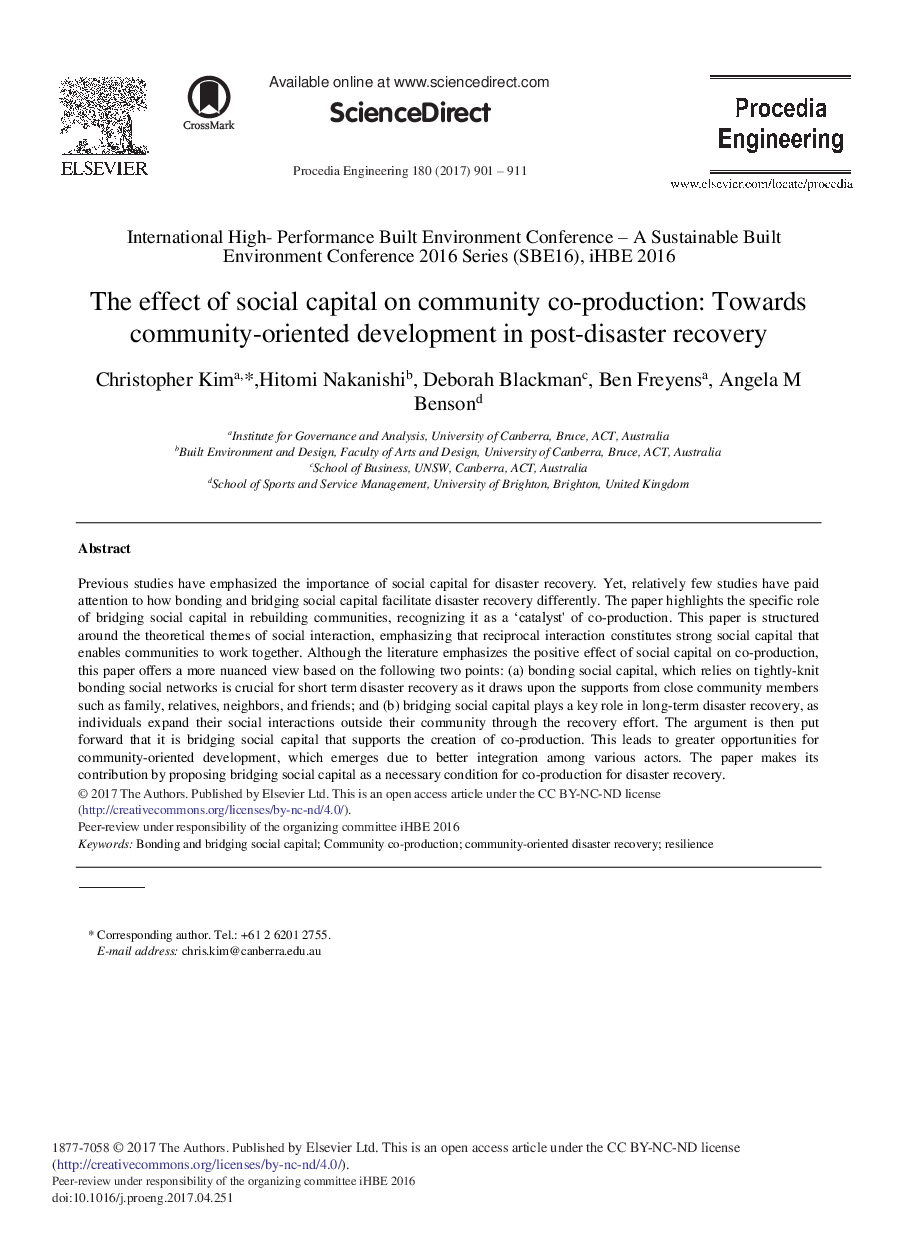| Article ID | Journal | Published Year | Pages | File Type |
|---|---|---|---|---|
| 5028996 | Procedia Engineering | 2017 | 11 Pages |
Previous studies have emphasized the importance of social capital for disaster recovery. Yet, relatively few studies have paid attention to how bonding and bridging social capital facilitate disaster recovery differently. The paper highlights the specific role of bridging social capital in rebuilding communities, recognizing it as a 'catalyst' of co-production. This paper is structured around the theoretical themes of social interaction, emphasizing that reciprocal interaction constitutes strong social capital that enables communities to work together. Although the literature emphasizes the positive effect of social capital on co-production, this paper offers a more nuanced view based on the following two points: (a) bonding social capital, which relies on tightly-knit bonding social networks is crucial for short term disaster recovery as it draws upon the supports from close community members such as family, relatives, neighbors, and friends; and (b) bridging social capital plays a key role in long-term disaster recovery, as individuals expand their social interactions outside their community through the recovery effort. The argument is then put forward that it is bridging social capital that supports the creation of co-production. This leads to greater opportunities for community-oriented development, which emerges due to better integration among various actors. The paper makes its contribution by proposing bridging social capital as a necessary condition for co-production for disaster recovery.
